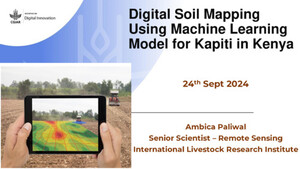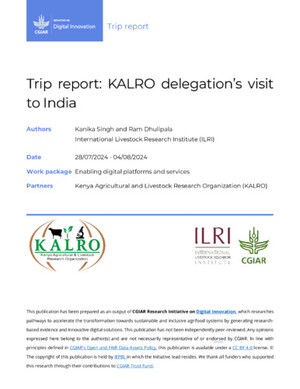
Why technology adoption is nowhere near where it should be and how social learning could help
The recent annual monitoring and evaluation (M&E) meeting of the Africa RISING program featured a very interesting presentation by David Spielman, of the International Food Policy Research Institute (IFPRI) about ‘Improving evidence on the impact of agricultural research & extension – Reflections on CSISA’s experience‘. This presentation has many relations to the work currently undergoing on social learning as part of the CGIAR Research Program on Climate Change, Agriculture and Food Security (CCAFS).
What the author stresses in this presentation is that:
- We may have focused the past 40 years of our agricultural research on technologies, sometimes the right technology for the right context, but we still have not really managed to scale up technologies well enough and successes are still patchy and isolated. Perhaps rather than focus on (just) the technology, we should have focused on learning more about the process of getting farmers adopt technologies in the first place.
- A lot of constraints are affecting the adoption of technologies by farmers, and some of these constraints are usually overlooked (e.g. risk preferences, present bias, aspirations etc.) as scientists tend to focus on the technology itself. These ‘tangents’ that are not considered carefully enough – typically gender and other social differentiation issues – have a very real effect on technology adoption.
- So we need to learn much more about the merits of various adoption approaches but also be rigorous about evaluating them so we can better compare them, on a scientifically sound basis, and with good traces (publications) that other specialists can build upon later.
- One interesting approach that the Cereals Systems Initiative for South Asia (CSISA) has been piloting is around highly targeted ‘individual interventions’. Rather than rely on a baseline survey that takes account of every possible aspect, the CSISA M&E team identifies possible areas for improvements, comes in with diagnostics, a valuation, an evaluation, some consideration for tangents and eventually a variety of ‘scale up’ scenarios.
What the author did not emphasize in the presentation, but mentioned in a personal communication, is the importance of documenting this work so it can affect other people’s work beyond the group of people directly involved – leaving traces with publications …
Learning about technology adoption (and agricultural extension) approaches is close to the work that a collective is undertaking in the Climate Change Social Learning (CCSL) initiative taking place as part of CCAFS.
Here are a few reasons why these two areas of work are similar:
The presentation by David Spielman relates to the merits of various technology adoption methods, some of which are very participatory, in the hope that this will increase the chances for the technology to get adopted. This is very close to the list of 120+ (proto-) social learning methodologies (appendix 5) that consultant Julian Gonsalves extracted from CGIAR’s experience in participatory research for the CCSL group in 2012.
Some of the work that is happening in CCSL relates among others to local decision-making around using specific technologies, for climate change adaptation and/or mitigation. But there is not enough understanding about the drivers of ‘local decision-making’, which is why CCSL is also trying to unpack this complex decision-making process.
Finally, the plea by David Spielman to assess and quantify what extension and technology adoption methodologies work echoes the current work being undertaken in assessing and monitoring social learning (this resource is currently only accessible to CCSL sandbox members but will soon be documented on the CCSL sandbox wiki).
Hopefully some of these efforts will coalesce – or complement each other as there are also some differences between what the Spielman presented and what CCSL is trying to unpack:
- Spielman exhorts us to assess specific adoption methodologies, not to assess specifically ‘social learning’ methodologies
- The focus of his presentation is about ‘technology adoption’ whereas social learning could be used for many other purposes than technology
- Arguably one of the most fundamental differences is that ‘technology adoption’ seems to emphasize the technology transfer from one group to the next, whereas social learning is all about joint exploration, co-creating, not knowing early on what e.g. the right technology will be etc.
My take home messages from Spielman for the CCSL community are a) it is important to rigorously assess and quantify approaches to better understand, in a scientifically sound way, how these approaches may help or not, and b) it is important to document this work in peer-reviewed journals, to go beyond just adding to the wealth of experiences that Julian Gonsalves introduced in a workshop in November 2012, towards actually influencing the discourse and practice of people and organizations.
The challenge is to evaluate social learning approaches in practice, face-to-face, and to document it so that this body of work can be adopted by others. With our current efforts to strengthen ways to monitor and evaluate social learning, some first steps are being taken to go beyond islands of success, to the sea of scaling up technologies!

















